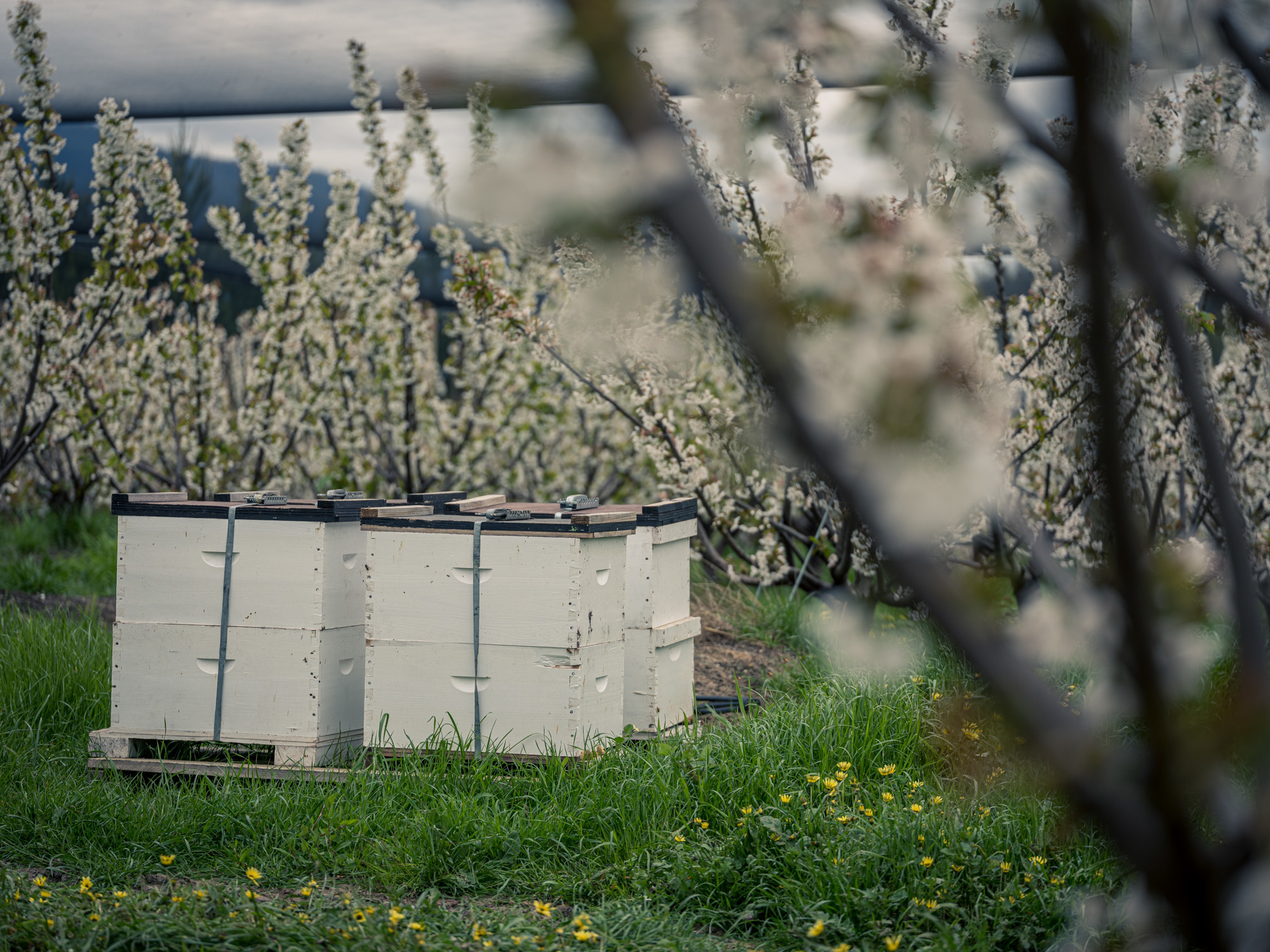Crop pollination
Pollination Guide for the Australian Berry Industry
The Berries Australia Pollination Guide for the Australian Berry Industry 2024 is a best management practices guide for growers and pollination stakeholders in the berry industry. It provides guidance on how to establish and maintain clear communication between parts of your business and your beekeeper. It includes a detailed list of key conversations to have, roles and responsibilities.
It also includes templates for pollination agreements and letters to neighbours.
Access the guide here: Pollination Guide for the Australian Berry Industry
Pollination: unresolved questions
Dr Jon Finch, part of the team at the Tasmanian Institute of Agriculture (TIA) researching honeybee pollination and alternative pollinators, presented at the 2023 Fruit Growers Conference.
Jon highlighted the importance of combining pest and pollinator research (IPPM) rather than considering them as separate issues and instead manage them holistically.
His presentation posed many questions around pollination that remain unresolved.
How much pollination is carried out by feral bees versus managed bees, and how might varroa impact pollination?
- Using New Zealand as an example, the varroa mite incursion showed that feral honeybee populations were largely wiped out.
- Managed hives could be treated with miticides and supported in other ways (i.e. supplementary feeding), however the impact of these miticides on bee health is still poorly understood.
What alternative pollinators are there?
- Bumblebees are top of the list. Bumblebees first arrived in Tasmania in 1993 and were most likely self-introduced from New Zealand, where they are widely used in crop pollination and are commercially available.
- Bumblebees fly at lower temperatures than honeybees, making them effective for early flowering crops like cherry and apple, and are not impacted by varroa mite.
- Since their arrival in Tasmania, populations have not been tracked and there is limited data on their contribution to production across a range of horticultural crops. The impact bumblebees have on the environment is also unknown.
- Some native bee species also have the potential to be good pollinators and can deliver more pollen per visit than honeybees, despite being less than half their size. It is unknown what the role of other native pollinators is in horticultural production.
How do pollinators fit into our horticultural production systems?
- Firstly, pollinators need diverse diets and having diverse flowering plants around the production area will promote pollinator health and diversity.
- Secondly, most broad spectrum pesticides will kill or deter pollinators, so minimising their use is important to help them thrive.
- Research so far indicates the use of action thresholds for chemical use is a benefit, as well as spraying at night and outside of flowering times to avoid impacting pollinators, and avoiding the use of broad spectrum insecticides or fungicides during flowering.
What challenges do polytunnels pose for pollination?
- Pollinator visits are usually much lower in the centre of polytunnels compared to the tunnel ends, particularly in rubus and blueberry crops. Berry weight and yields are often lower in the middle of tunnels.
Why do pollinators not visit plants in the middle of polytunnels?
- It may be due to climate impacts such as heat and humidity that deters pollinators.
- Light transmission through the tunnel plastic may also interfere with the ability of pollinators to forage and look for flowers.
Do these effects occur more or less under the cool conditions in Tasmania and, if so, what can we do about it?
- Possible solutions to be investigated would be shorter tunnels to improve pollination, or an increase in light and ventilation.
- Different kinds of pollinators could provide the answer.
TIA is trying to obtain additional funding to address some of these unresolved questions.
TIA is also part of a Cooperative Research Centre (CRC) pollination bid, aiming to get long term federal funding for pollination in Australia.
